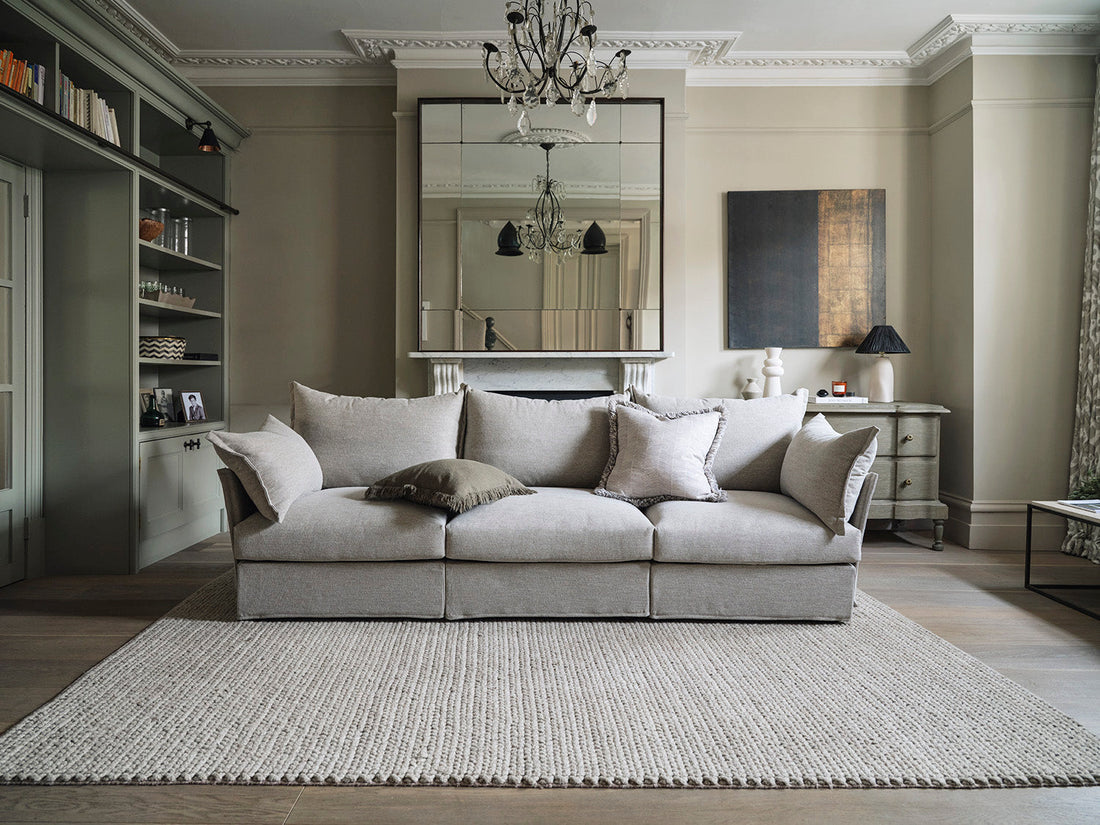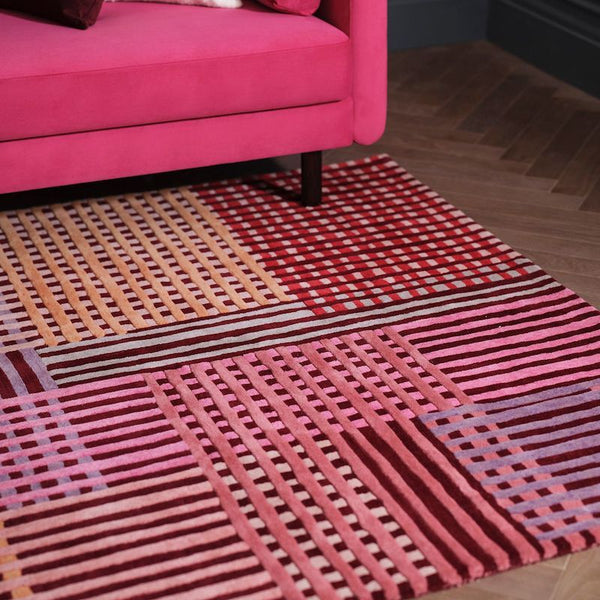How to Choose The Ideal Area Rug Size For a Living Room

With a multitude of area rug designs, styles, and sizes, it can be difficult to know where to begin. When it comes to choosing an area rug for your home, you should start by understanding your space, its size and interior style, and the functionality of the rug. Here, we’ve jotted down a few considerations to make when looking to buy an area rug.
The 70% rule for area rugs
First things first, the 70% rule for area rugs. If you haven’t heard of the 70% rule for area rugs, do not fret. It’s a rule mostly seen within interior design, but it’s a rule that should be incorporated into the home. The rule requires an area rug to cover 70% of the seating – but why is there such a rule? The 70% rule provides a sense of balance, and cohesion, and helps create unity.
Below is a breakdown of the 70% rule for area rugs:
The space that is covered by an area rug: Once the area rug has been placed on the floor, it should cover 70% of the seating area. If you’re living room has a 3-seater sofa and an armchair, for example, the rug should be able to fit under those pieces, either entirely or partially.
The rule helps with functionality: the 70% rule makes sure that when someone is sitting on the sofa, they aren’t half on or half of the rug. Not only could it lead to uneven wear and tear of the rug, but it could be uncomfortable for the person seated.
The style and design of an area rug: Ensuring that the rug is inclusive of all seating furniture makes the room feel cohesive and styled. It creates symmetry, focus, and more importantly, balance. The rug helps the sofa and armchair become statement pieces and a focal point of the room – especially true if the space is open-plan.
Although it’s a rule, there is flexibility: rules are always made to be broken. The 70% rule is dependent on the size of the space and the layout of the furniture. You might think the room needs a larger or smaller rug, but the key is the ensure there is balance in the room. A small rug might suggest it was an afterthought and a large rug might engulf the space.
If you’re unsure of rug sizes and what might work in your space, start with the 70% rule. It’s a good place to understand what rug size will work, from there you can look at style, design, colour, and patterns.
What is the relationship between the rug and the seating area?
You should make sure that the size of the rug is in sync with the seating area, and follow the 70% rule. One of the biggest mistakes people make is buying a rug that is way too small for the space, or too big.
As mentioned above, to create a sophisticated, luxurious aesthetic, make sure the area rug includes all of the furniture pieces in the room. If you’d prefer a more casual, relaxed look, you can place the sofa’s front legs on the edge of the rug. This has the same desired effect as the 70% rule or of a large rug by defining the seating area. However, it doesn’t demand a large rug.

If your living room is small and you’d still like to add warmth to the room, a smaller rug is a great choice and doesn’t need to touch the furniture to create the desired effect.
Leave a border between the rug and walls
Around the room’s edges, a rug should leave a border that keeps the floor visible. The general rule of thumb is to leave 10 to 20 inches of floor between the rug and the walls. This is to avoid the rug resembling carpet. It will also ensure the rug stands out and is kept as a statement piece and focal point.
What shape is the room?
It may come as a surprise, but rectangular rugs are not the only choice when choosing an area rug. Yes, they are the most common, but rugs come in various shapes. Who knew? For example, if your furniture is round or circular in nature – a round coffee table, perhaps – then a circular or round rug might be a good choice. When choosing an area rug, make sure to keep the size of your living room, and the type of furniture in that room, in mind.
Where does the traffic flow?
The last thing you need is a tripping hazard. Understand how people move through the room and choose a rug size that fits all of that space. If the space isn’t covered properly it can lead to uneven wear and tear and is a tripping hazard.
Think about the room’s style
Rugs that feature heavy, detailed patterns or dark tones, can make a room feel smaller. It’s worth considering the colour tone and patterns of the rug and the size of the room. If the room is large, this won’t be a problem.

What does an area rug do for a room?
An area rug is an important interior accessory that’s more than just decorative. An area rug defines a space, creating a focal seating area. It provides comfort and warmth and is a way to introduce colour and patterns to an interior. Area rugs also protect flooring, add texture, and centre furniture.
Are area rugs a must?
Area rugs are not necessarily a must, but they are recommended if you want to create focus, balance, and interest in a room. Alongside, comfort and warmth, another benefit of using area rugs in a room is noise reduction. Soft furnishings absorb noise; perfect for large, minimalist living rooms. Some of the drawbacks to area rugs are that they can be expensive, require maintenance, and can trap allergies.
Area rugs are a personal preference but do guarantee to be a great addition to any room.





